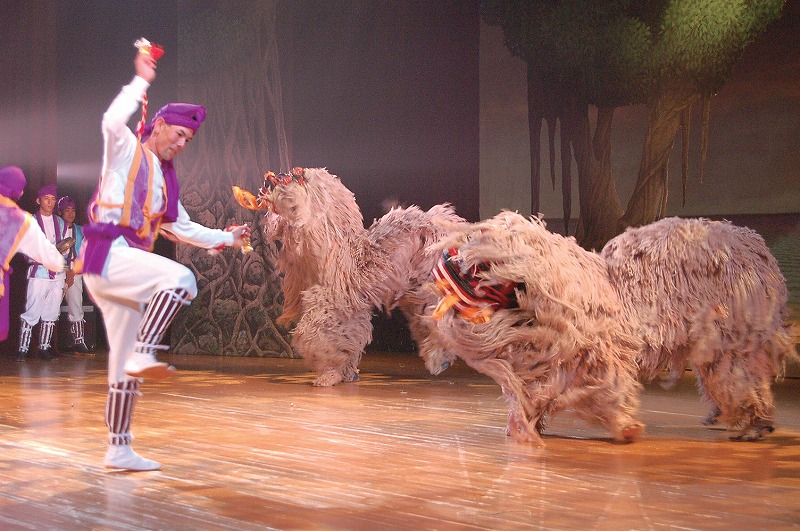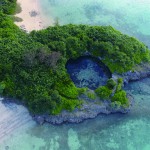【Designated by the City:Intangible Folk 】Shisha (Lion Dance) of Matsubara
This dance is performed at the square by the coast, referred to as Zugaki, during the Hari (Sea God Festival) held every year on May 4 of the lunar calendar. That dance is part of the event to pray for good catch at sea and to ward off evil spirits. Once ceremonies are complete at sea, the festivities move on to the Zugaki, and finally, the Shishi lions make their appearance. There are two Shishi lions, a male and a female, and the dance includes the lions, the singers/rhythm keepers and the Sanshin players.
The performance of the Shishi dance is conducted by a person who carries the head of the Shisi (Shisha), and a person who carries the tail-end. The rhythm of the dance is accompanied by the Tasa (flute) and Tsuzunfuchi (small drum) players as the Tasubi, and one or two Sanshin players for the music.
The Shisha watches the movements of the Tasa through the nostrils or the mouth of the lion’s head, dancing vigorously as the tail-end twists and turns to meet the moves. The dances of the lions are improvised and the accompanying drums are very simple.
Among the Hari festivities in Miyako, the only regions where the Shishi dance can be observed are in the Kugai and Matsubara settlements. The Shishi dance of Matsubara, in particular, is an organized performance handed down from ages ago, and it is a valuable, intangible folk culture asset to understand the customs and traditions of the people.
 宮古島アプリの綾道(あやんつ)トップページ
宮古島アプリの綾道(あやんつ)トップページ 宮古島アプリの綾道(あやんつ)の内容
宮古島アプリの綾道(あやんつ)の内容 宮古島の3つのルート
宮古島の3つのルート 宮古島市長のあいさつ
宮古島市長のあいさつ 宮古島文化遺産紹介
宮古島文化遺産紹介








